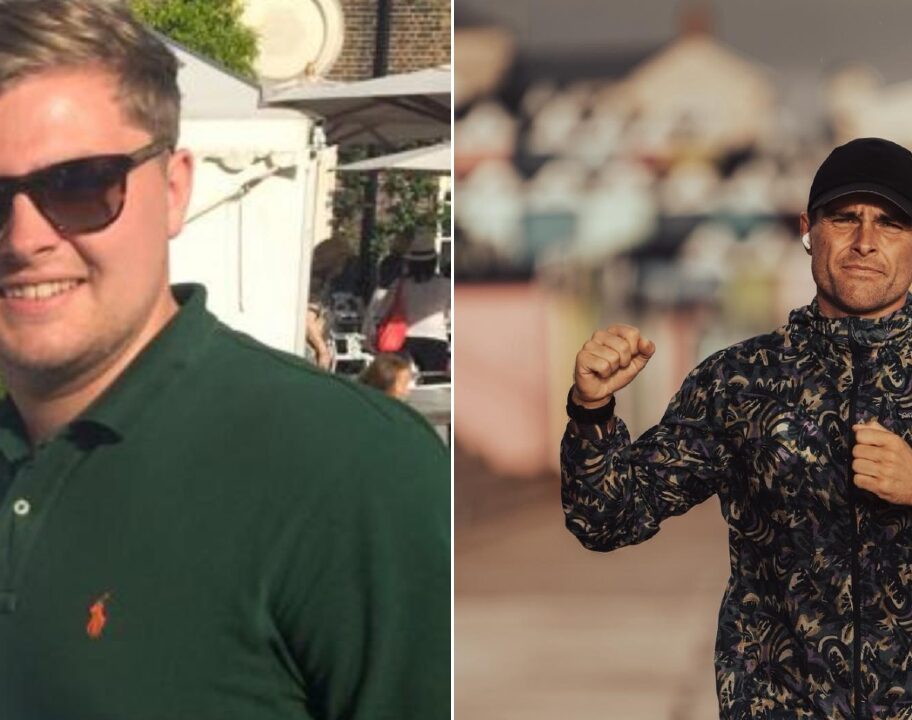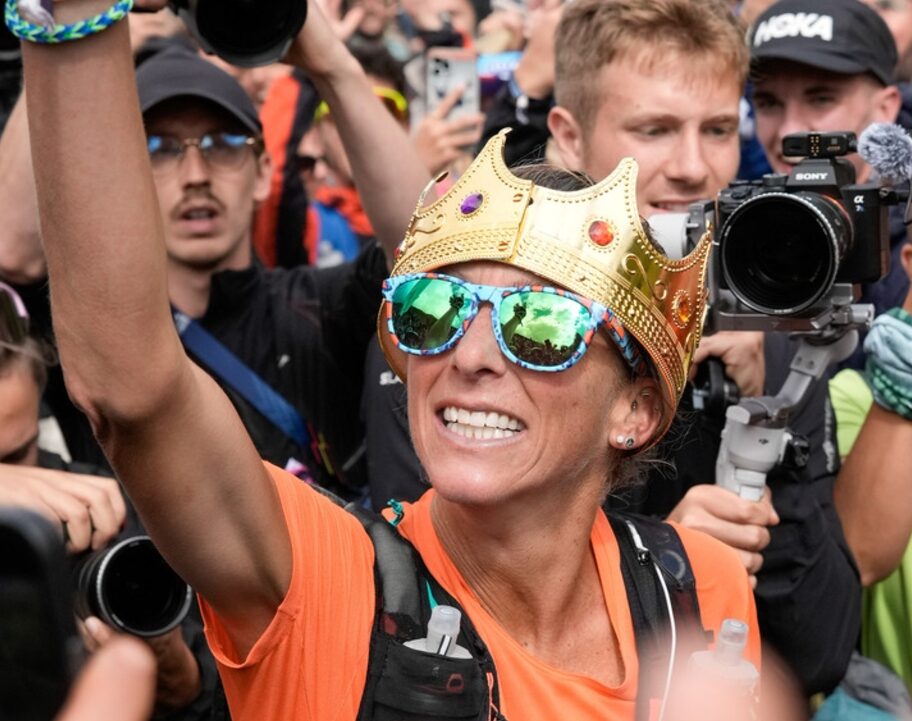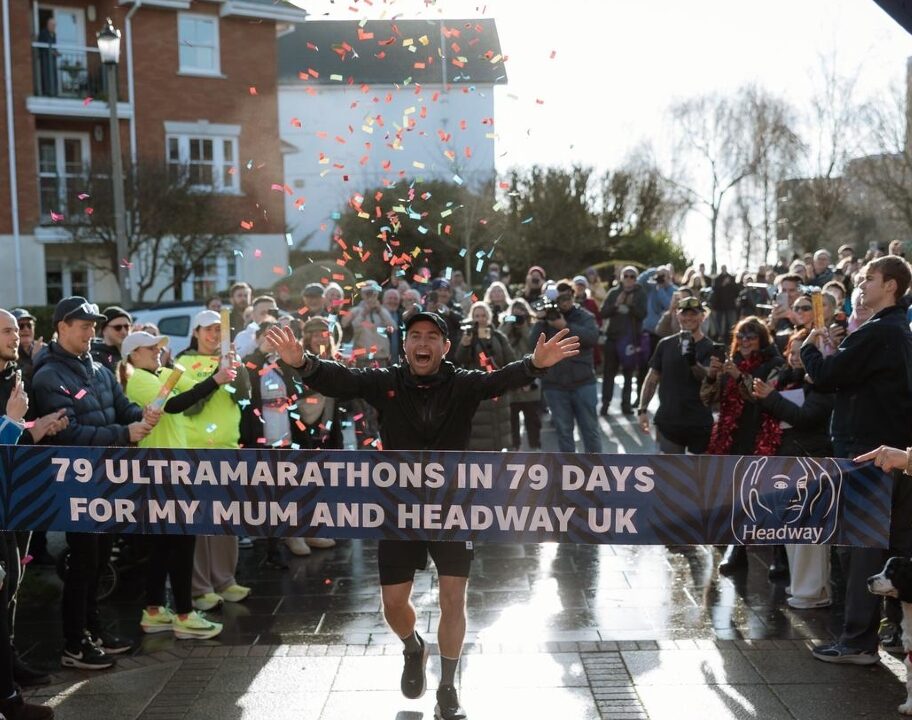Ultra-Trail Snowdonia by UTMB (UTS) is Britain’s only UTMB World Series event which features four technically challenging races with high levels of elevation gain in the Snowdonia national park.
The ERYRI 25K, UTS 50K, UTS 100K and the biggest race, the UTS 100M, all offer competitors a unique race through the mountain trails on and around Snowdon, and offer an Alpine-scale mountain running challenge.
Date, start time and live tracking
The UTS 100M is off first on May 10 at 13:00 (all local time), with a cut off time of 48 hours.
The UTS 100K starts next on May 11 at 05:00, a cut off time of 32 hours applying.
The UTS 50K also gets underway on May 11, starting at 08:00 with runners having a maximum of 14 hours to complete the course.
The shortest race is the ERYRI 25K, starting at 10:00 on May 11 with a cut off of 5 hours 30 minutes.
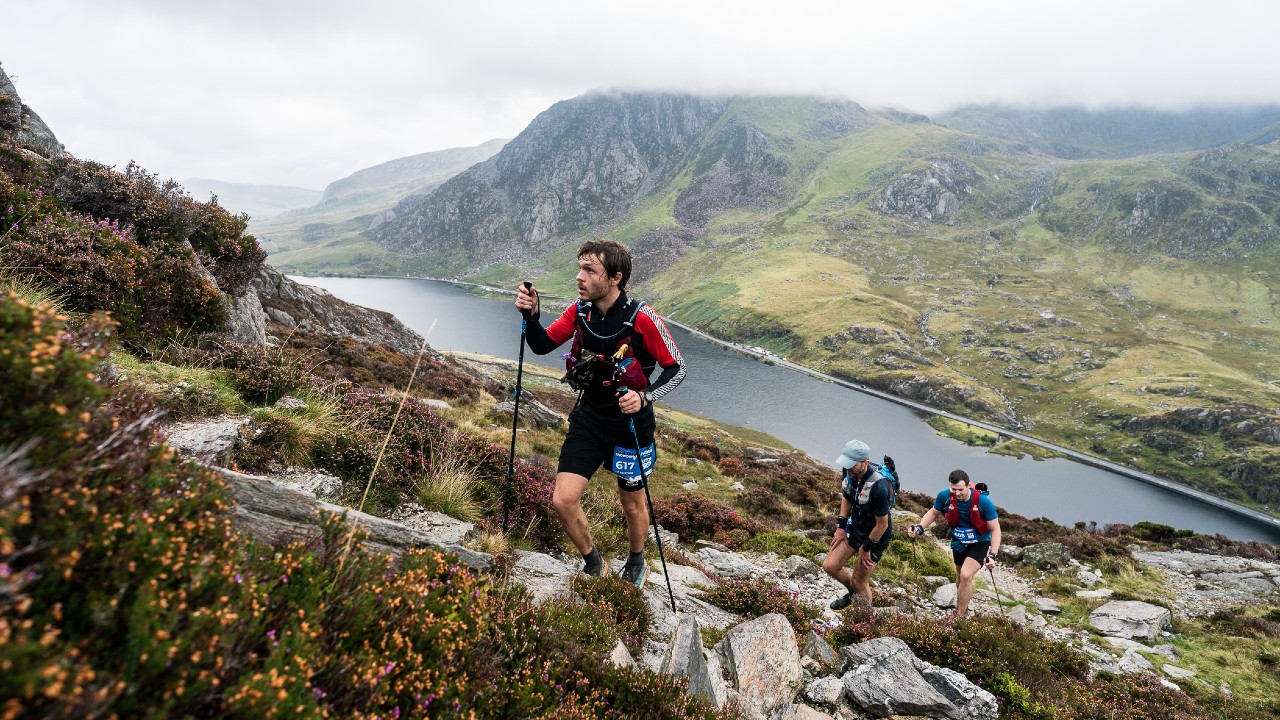
All competitors will be issued with tracking devices and dot watchers will be able to map the progress of each runner.
Dot watchers can follow live tracking, which is available HERE.
UTS 100M – Friday 10th May, 1300 start
UTS 100K – Saturday 11th May, 0500 start
UTS 50K – Saturday 11th May, 0800 start
ERYRI 25K – Saturday 11th May, 1000 start
UTMB Running Stones
As part of the UTMB World Series, completing any of the UTS races will help with qualification towards Ultra-Trail du Mont-Blanc (UTMB) and the UTMB World Series finals.
UTS 100M finishers: 4 x UTMB Running Stones
UTS 100K finishers: 3 x UTMB Running Stones
UTS 50K finishers: 2 x UTMB Running Stones
ERYRI 25K finisher: 1 x UTMB Running Stones
UTS Race Route
All the routes for Ultra-Trail Snowdonia by UTMB races have changed over the years.
In its latest iteration, the UTS 100M is made up of one big loop, starting and finishing in the town of Llanberis. It has a total distance of 104.3miles with an elevation gain of around 31167ft.
The race takes in a host of Snowdonia’s peak, including Yr Wyddfa- Snowdon in English- the highest point in the British Isles outside the Scottish Highlands- which comes around 85 miles into the race.
With an extreme amount of elevation gain, the race also has a brutal start with a series of steep climbs and descents within the first three checkpoints of the race; Bwlch Glas followed by Glyder Fawr and Carnedd Llewelyn all greet runners in around the first 20 miles.
The 103km UTS 100k also starts and ends in Llanberis too, taking in countless stunning trails, technical ridges and epic views over the route which has 20997ft of elevation gain. It has the same brutal start as the 100m and finishes with Snowdon towards the end, but its loop does not stretch as far south as the longer race, which dips down twice to take in Blaenau Ffestiniog and Beddgelert.
UTS 50k features a challenging 10826ft of elevation gain throughout the 55km race, taking in several technical mountain trails. It notably reaches the peak at Snowdon and Bwlch Glas, departing from and finishing in Llanberis.
The ERYRI 25K is an an entry-level event open to runners of all abilities, but it still includes a full ascent of Yr Wyddfa/Snowdon. It has a total elevation gain of 4265 ft.
Facts, Tips & FAQ
Competitors who choose to take poles must carry them for the duration of the race. It is forbidden to start without poles and collect them during the course of the race. No poles are allowed in drop bags. The use of poles will be forbidden in certain zones along the route marked by specific signs, for safety or environmental reasons.
Listening to music using earphones only, is tolerated, so long as it is safe to do so. Earphones must be removed when approaching or crossing any roads, at any checkpoints and when approaching and passing any Safety Team members.
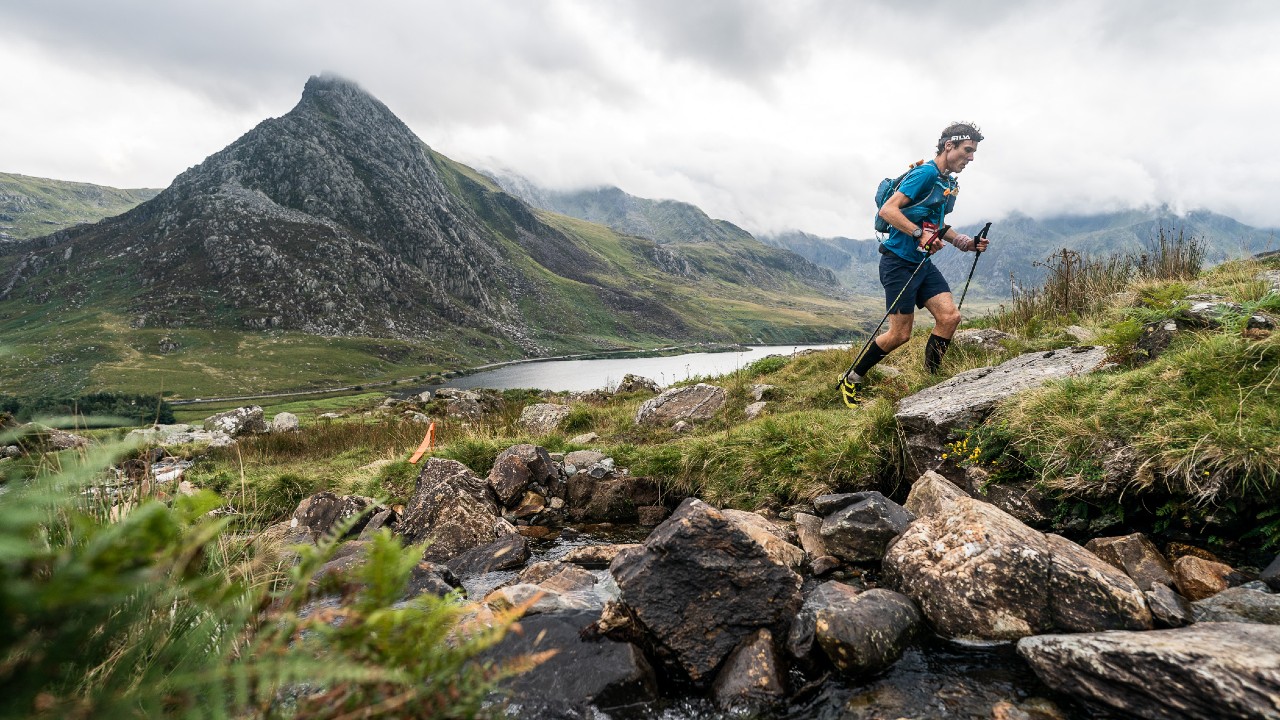
Personal support is allowed for UTS 100M and UTS 100K competitors at specified refreshment posts and only in the zone specifically reserved for this use. Support is restricted to one person only. Assistance given by a team of professionals, or any medic or paramedic, is strictly forbidden. No assistance is allowed, at any point along the race route, during UTS 50K.
Many sections of the route are very rough underfoot, with long sections of rocky terrain, which can be very slippery if wet. There is very little soft ground or tarmac featured on the routes.
The routes feature short sections of easy scrambling at a non-graded difficulty, but where there is some exposure and you may need to use your hands to steady yourself.
How to enter the UTS
Entry to the UTS 100M and UTS 100K are open to anyone over 20 years of age on the day of the race. The UTS 50K is open to anyone aged 18 or over on the day of the race. ERYRI 25K is open to those aged 17 and above.
2024 entries opened on Wednesday 24 May with the following prices: UTS 100M– £229, UTS 100K– £179, UTS 50k – £129, Eryri 25k – £69.
Race capacities in 2023 were set as follows: UTS 100M – 300, UTS 100K – 600, UTS 50K – 800, ERYRI 25K – 400

To register for the UTS 100M and UTS 100K races, runners must have proven experience in running long distance trail running races. In 2023, UTS 100M, runners must have had a valid performance index in the 100M or 100K category while for UTS 100K, runners must have a valid performance index in the 100M, 100K or 50K category.
Registration is available here.
UTS records and past winners
The UTS race routes have changed each year as the series has developed so there is no official record as such. Added to this, the format changed with the 2021 season so that the races that had previously been marked in miles are now marked in kilometres – hence the winning times appearing to have been hugely reduced when in fact it is the distances that have changed.
Past winners
2023
UTS 100M: M – Josh Wade 23:51:31, F – Emma Stuart 28:52:55.
UTS 100K: M – Jean-Philippe Tschumi; 13:27:28, F – Lizzie Atkins; 16:44:09.
UTS50K: M – Tom Evans; 5:27:11, F – Johanna Gelfgren, 6:46:51.
2022
UTS 100M– Cancelled mid-race due to severe weather
UTS 100K: M – Josh Wade 13:16:23, F – Rebecca Di-Luzio 18:58:37
UTS 50K: M – Jack Scott 5:32:26, F – Kirsteen Welch 6:19:59
2021
UTS 100M– M – Josh Bakker-Dyos 28:51:43 , F – Alice Sheldon 45:09:55
UTS 100K – M – Mark Darbyshire 14:25:47, F – Sarah Staveley 21:41:03
UTS 50K– M – Harry Jones 6:13:22, F – Lauren Woodwiss 7:54:18
UTS kit list
The challenging nature of each of the races requires a comprehensive kit list. The mandatory list is detailed here although the race organisers also recommend additional kit, details of which can be found on the official website.
Failure to carry mandatory kit will result in punishments ranging from time penalties to immediate disqualification.
UTS 100 Mandatory Equipment:
- Pack suitable for carrying mandatory equipment throughout the race.
- Suitable footwear – note that road or barefoot style shoes are not acceptable.
- A map will be supplied at registration and competitors must carry that map and a compass and are expected to have the ability to use both effectively.
- Mobile phone (fully charged at start) with international roaming allowing for its use in UK. The phone must have security numbers loaded. The phone must be on at all times during the race and must not be in airplane mode. If a smartphone is used, live Run application should be installed and activated. An external battery is highly recommended.
- Personal cup 150ml minimum, suitable for consuming hot drinks/soup (bottles or flasks with lids are not acceptable).
- Plates and cutlery to eat. At the aid stations, cutlery will be provided.
- Capacity to carry minimum 1.5-liter water/fluids. Note: When leaving some aid stations, it will be mandatory to leave with 1.5-liter of fluids.
- 2× fully functioning torches, BOTH with spare, separate batteries (i.e., a power-bank or similar only counts as ONE spare torch battery). Recommendation: 200 lumens or more for the main torch.
- Survival blanket (minimum size 2m x 1.4m) or bag (bag preferred – EXAMPLE).
- Whistle.
- Self-adhesive elasticated bandage which can serve as a bandage or strapping (minimum 100cm x 6cm).
- Emergency food reserve. Recommendation: 800kcal (2 gels + 2 energy bars of 65g+ each).
- Jacket with hood which will withstand bad weather in the mountains and made with a waterproof* and breathable** membrane (e.g., Outdry) (*minimum recommended 10,000 Schmerber. **RET recommended inferior to 13). The jacket must, imperatively, be fitted with an integrated hood or one which is attached to the jacket by the original system designed for that purpose by the manufacturer. The seams must be sealed.
- The jacket must not have sections of fabric which are not waterproof, but air vents fitted by the manufacturer (under-arm, in the back) are accepted. It is the runner’s responsibility to judge, with these criteria, if their jacket fits the regulations stated and is thus suitable for bad weather in the mountains. However, during a check, the judgment is made by the person or steward in charge of the check point.
- Waterproof over trousers with taped seams.
- Long-legged trousers or race leggings OR a combination of legging and socks which cover the legs completely (they can be carried in the backpack in case its use is necessary).
- Warm hat (‘Buff’ acceptable).
- Warm gloves.
- Additional warm second layer: a warm second layer top with long sleeves (cotton excluded) of a weight of a minimum of 180g (men’s size medium (M)) OR the combination of a warm long-sleeved underwear (first or second layer, cotton exclude) of a minimum weight of 110g (men’s size medium (M)) and a durable water repellant (DWR protection) windproof jacket*.
[The wind-proof jacket does not replace the obligatory waterproof jacket, and vice versa. ]
UTS 50 Mandatory Equipment:
- Pack suitable for carrying mandatory equipment throughout the race.
- Suitable footwear – note that road or barefoot style shoes are not acceptable.
- A map will be supplied at registration and competitors must carry that map and a compass and are expected to have the ability to use both effectively.
- Mobile phone (fully charged at start) with international roaming allowing for its use in UK. The phone must have security numbers loaded. The phone must be on at all times during the race and must not be in airplane mode. If a smartphone is used, live Run application should be installed and activated. An external battery is highly recommended.
- Personal cup 150ml minimum, suitable for consuming hot drinks/soup (bottles or flasks with lids are not acceptable).
- Plates and cutlery to eat. At the aid stations, cutlery will be provided.
- Capacity to carry water/fluids of 1 litre minimum.
- 1× torch in good working order with spare cell/batteries. Recommendation: 200 lumens or more.
- Survival blanket (minimum size 2m x 1.4m) or bag (bag preferred – EXAMPLE).
- Whistle.
- Self-adhesive elasticated bandage which can serve as a bandage or strapping (minimum 100cm x 6cm).
- Food reserve. Recommendation: 800kcal (2 gels + 2 energy bars of 65g+ each).
- Jacket with hood which will withstand bad weather in the mountains and made with a waterproof* and breathable** membrane (e.g., Outdry)
*Minimum recommended 10,000 Schmerber.
**RET recommended inferior to 13.
- The jacket must, imperatively, be fitted with an integrated hood or one which is attached to the jacket by the original system designed for that purpose by the manufacturer. The seams must be sealed.
- The jacket must not have sections of fabric which are not waterproof, but air vents fitted by the manufacturer are accepted.
- Waterproof over trousers with taped seams.
- Warm hat (‘Buff’ acceptable).
- Warm gloves.
- Long-legged trousers or race leggings OR a combination of legging and socks which cover the legs completely

